Jellyfish at record high, says Marine Conservation Society
- Published

Some barrel jellyfish reported were "the size of wheelie bins"
"Massive" barrel jellyfish have been spotted in record numbers in UK waters for a second consecutive year, a leading marine charity has said.
The Marine Conservation Society said the apparent increases "can no longer be ignored", and called for more research to understand what it means.
Most sightings in 2014 were in south west and south England, it said.
There were also about 30 reports of the potentially deadly Portuguese man-of-war in Devon and Cornwall in July 2015.
Underwater cameraman Rich Stevenson took pictures of barrel jellyfish off the coast of Plymouth
In Guernsey, an unprecedented number of Mauve stingers were reported in the same month.
The National Jellyfish Survey involves thousands of people recording jellyfish sightings on the Marine Conservation Society (MCS) website, external.
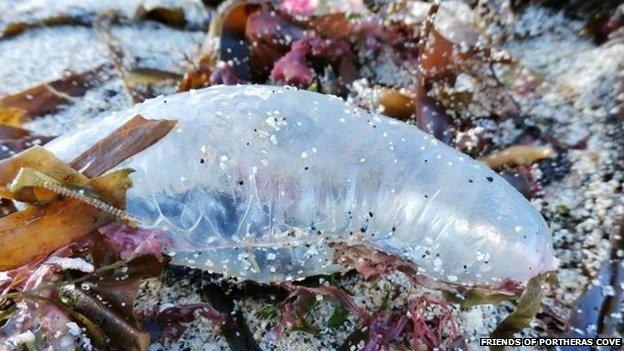
The Cornish pasty-shaped Portuguese man-of-war is a collection of tiny marine organisms, closely related to jellyfish
In 2013, the survey received over 1,000 reports involving hundreds of thousands of jellyfish.
Last year, the number of reports increased to over 1,400 reports and by July this year the survey had already received over 1,000 reports.

Jellyfish found in UK waters
Barrel jellyfish: Reported throughout the year all around the UK, but most 2015 reports from South and SW England. 75% of records this year have involved barrel jellyfish.
Moon jellyfish: Started to appear in May, by July were reported all around the UK
Blue jellyfish: Started to appear in May, by July were reported all around the UK
Compass jellyfish: Started to appear in June, with most reports in July from South West England, South West Wales and North West England
Lion's mane: Started to appear in May, by July were reported all around Scotland, Northern Ireland and Wales.
Portuguese man-of-war: About 30 reports from Devon and Cornwall in July
Mauve stinger: Unprecedented numbers recorded off Guernsey in July
By the Wind Sailor: Several reports from SW England in January, then a few in July

The MCS said August was usually a peak month for jellyfish sightings.

The Mauve stinger has a deep bell with pink or mauve warts and a powerful sting
Dr Peter Richardson from the society said: "We know that our seas are changing through climate change, resulting in rising sea temperatures and increased ocean acidification, and we know our seas are also heavily fished.
"At the same time we seem to be witnessing increases in jellyfish around the UK.
"Is this an anomaly, a coincidence, or are the jellyfish telling us something about fundamental changes in the condition of our seas?"
- Published13 August 2015

- Published31 July 2015
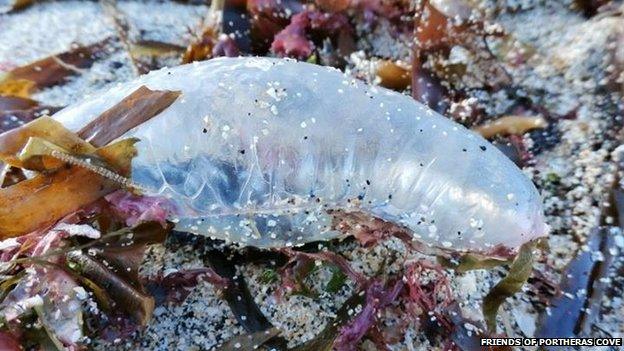
- Published27 June 2015
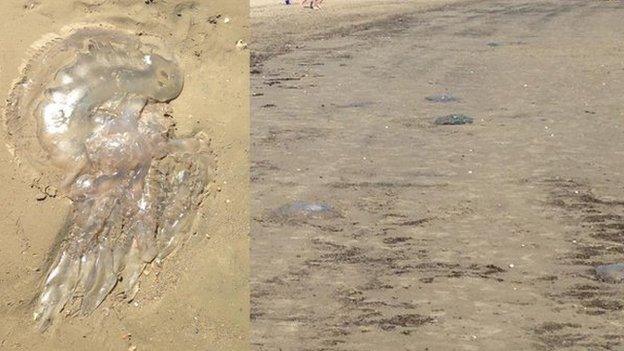
- Published15 June 2015
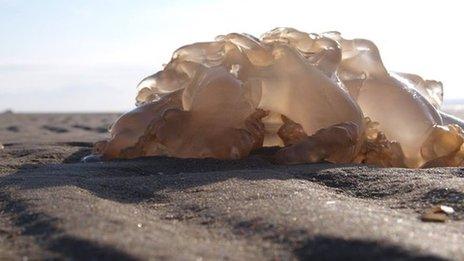
- Published23 January 2015
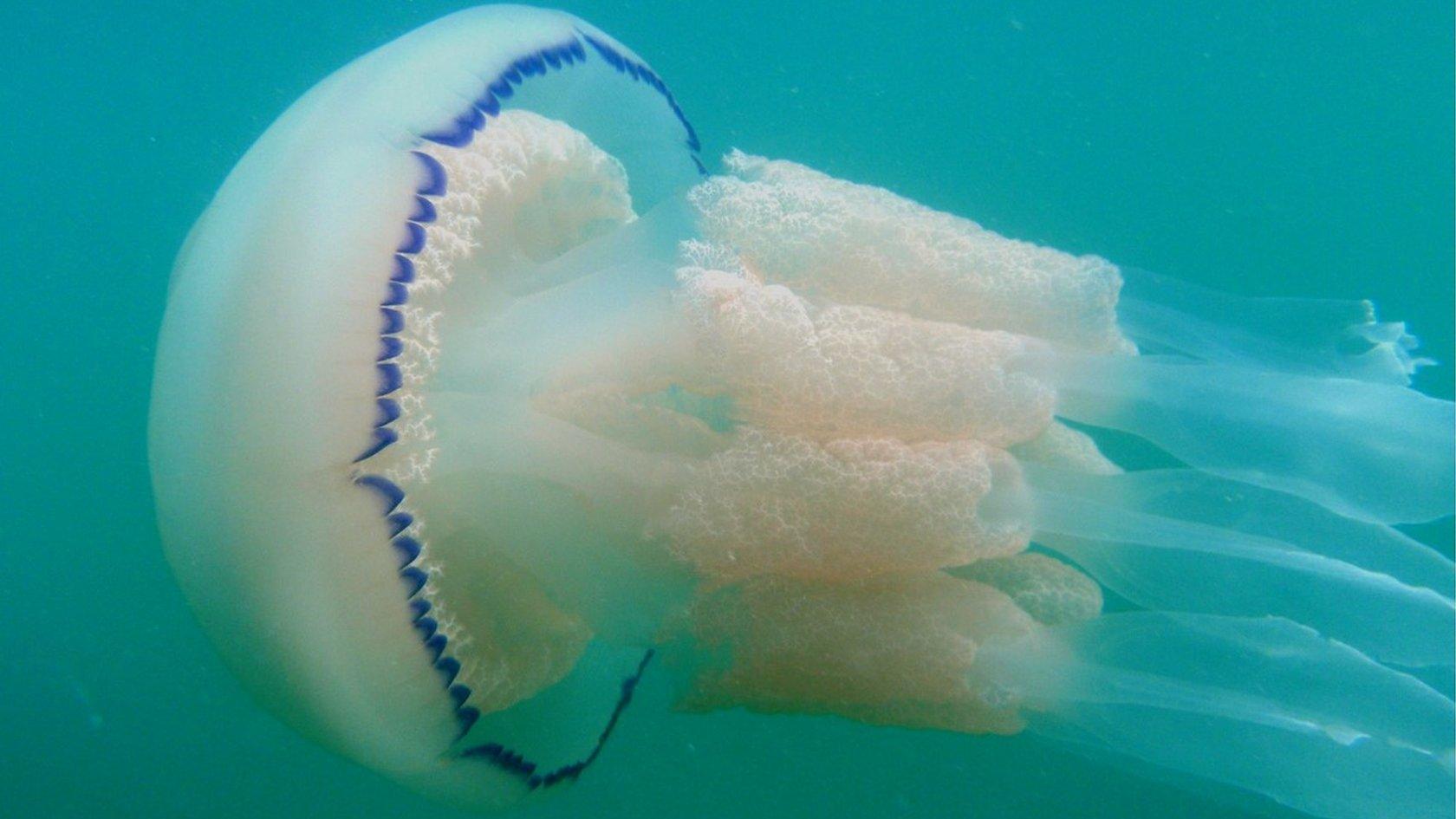
- Published12 May 2014
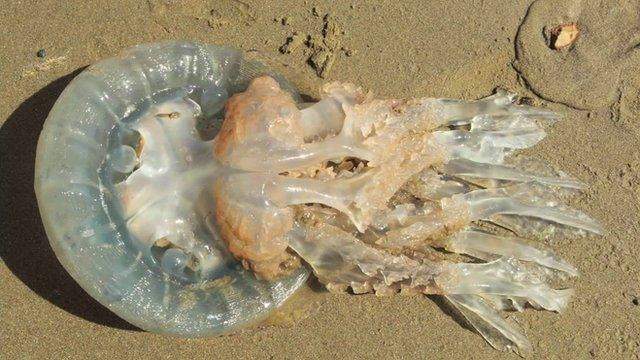
- Published30 July 2013
